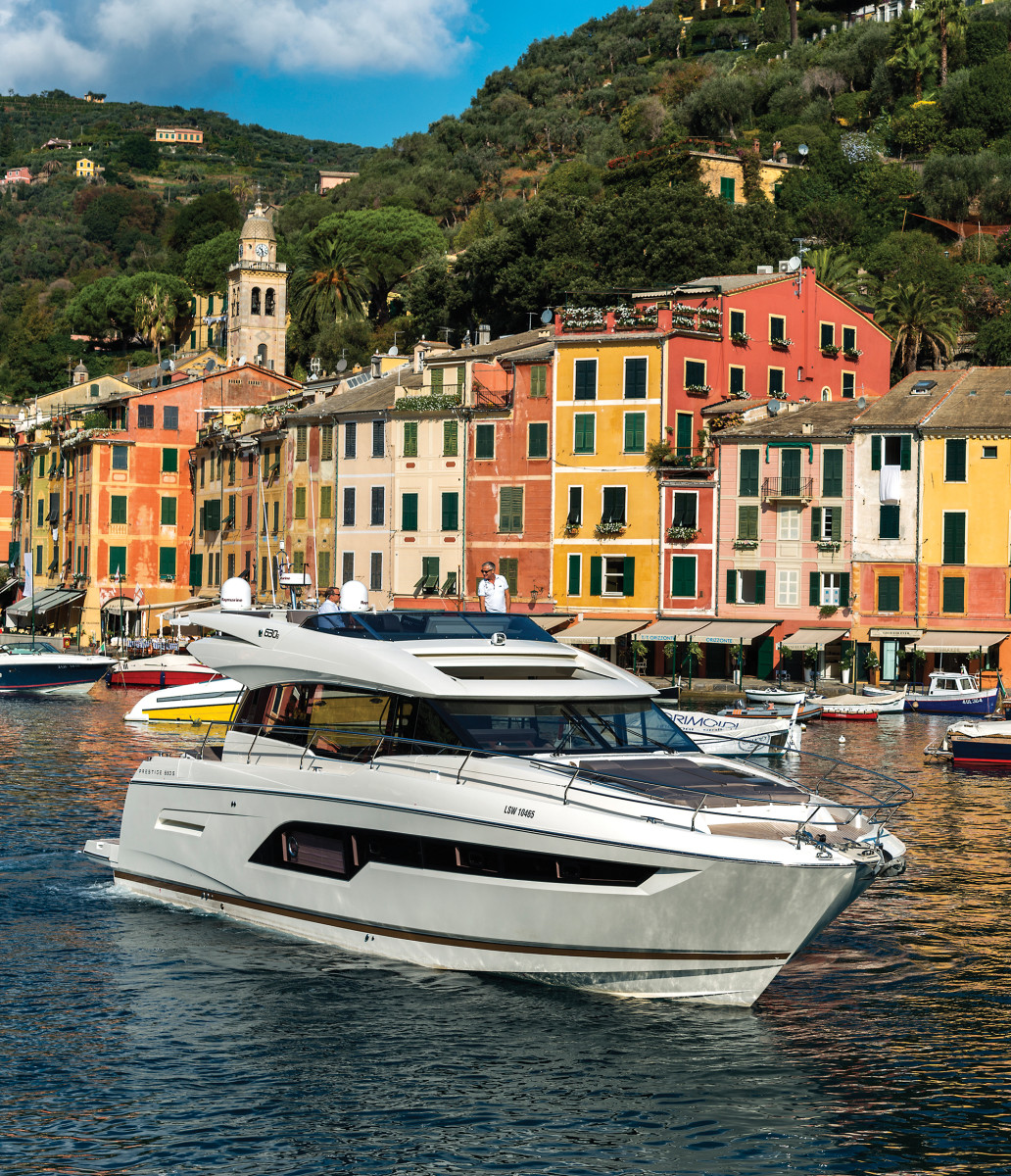Tested: Prestige 630S
This article originially appeared in the May issue of Power & Motoryacht Magazine
Versatile By Design
Don’t be fooled by the sporty lines of the Prestige 630S. She’s built to cruise as well as any motoryacht, as we found out on a run along the Italian Riviera.
It’s hard not to expect great things when you’re working from the best-laid plans. For this boat test, the details were carefully coordinated by Adrien Berton, sales manager for Prestige Yachts. He had invited us to Liguria in Northwestern Italy to cruise on a Prestige 630S, and he had ironed out most of the specifics by the time I arrived. We had a very short window to explore the area and experience the boat, but he had a few inspired ideas on how we could maximize our time aboard. We would cruise along the coast from Lavagna to Portofino, where we would then tie up, stroll the cobblestone streets, drink the coffee, sip the wine, eat the fish and peer into the mists that hang from the steep hillsides.
The Prestige 630S is based on the same hull as the builder’s 630, yet it’s a different boat in some ways. The S stands for Sport Flybridge, which means this iteration features a shortened version of the full-sized flybridge on the 630. That more compact bridge moves the helm farther aft, and also makes for a more raked and aggressive profile. The rest of the boat, though, is similar to the 630. It too has an aft-galley arrangement on the main deck, and a three-stateroom, three-head layout below. More of a motoryacht than a sleek express-style boat, I was interested to see what this new model could do.
Gallery Prestige 630S
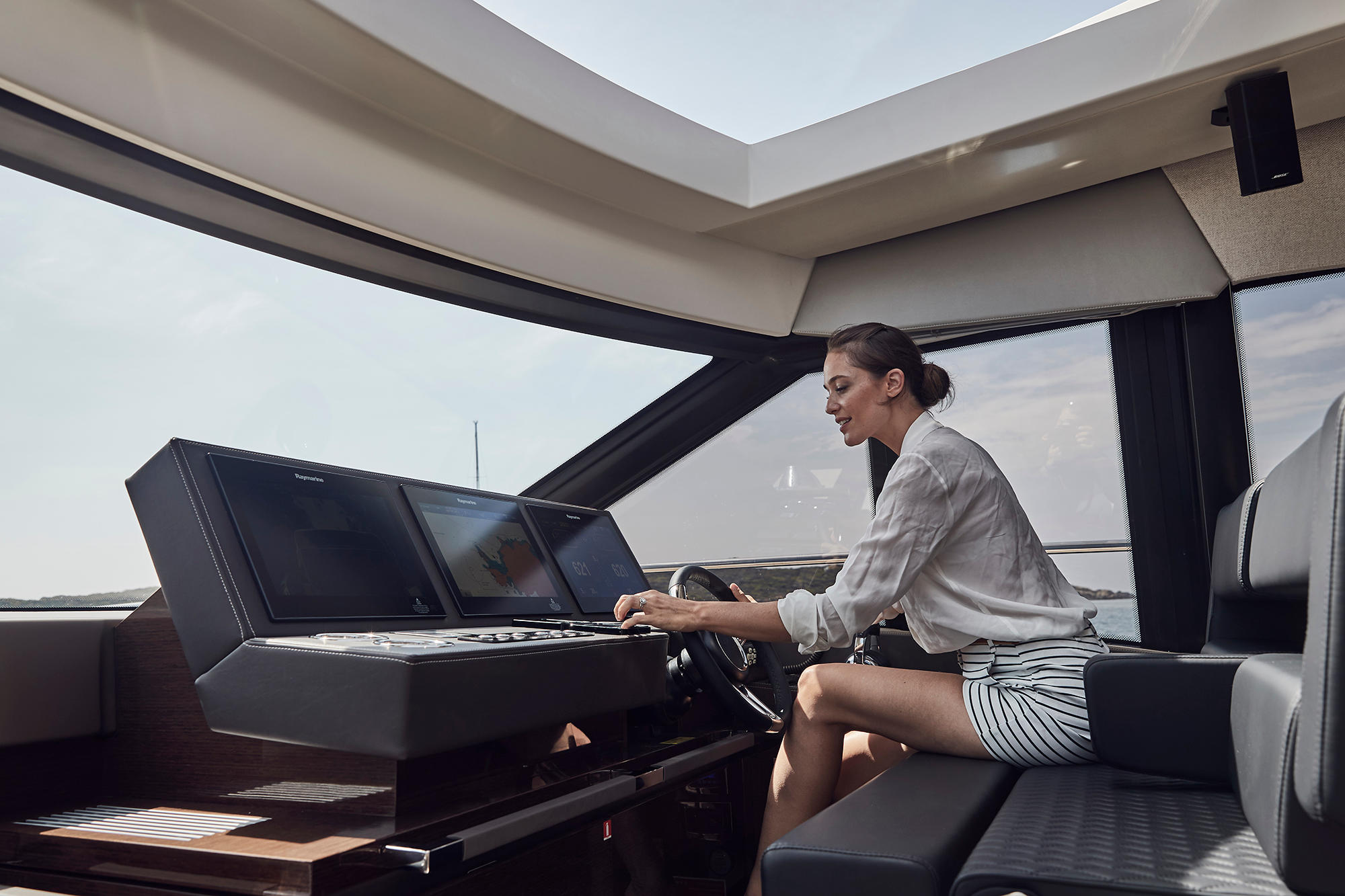
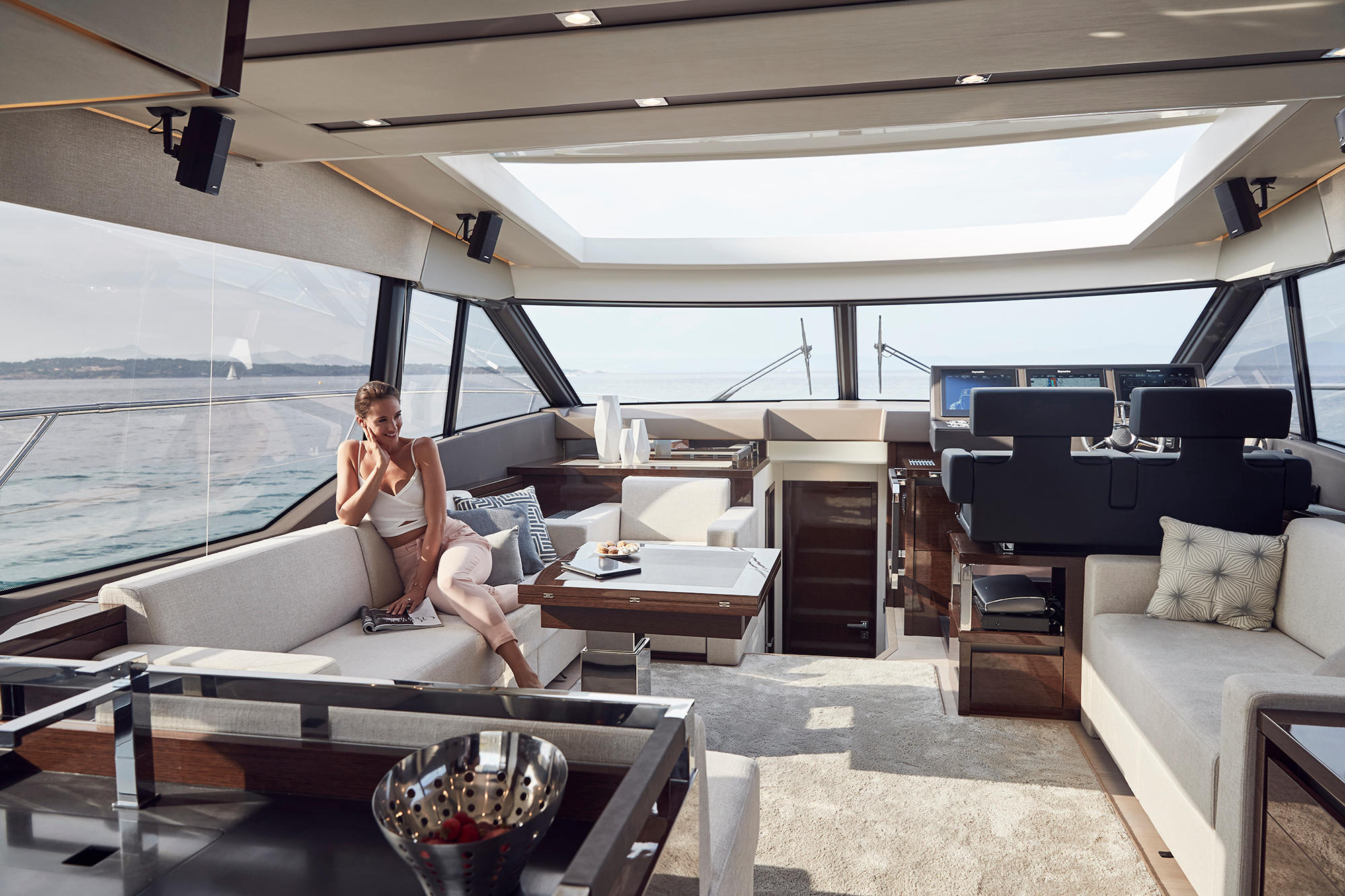
The 630S is one of five boats in the company’s Yachts line, which ranges from the two 630s up to the 750. Each model boasts a roomy layout that showcases the company’s skill with fit and finish. Prestige also builds the Coupé and Flybridge lines (10 models total, ranging from 41 to 59 feet). Genoa-based Garroni Design has made substantial design contributions to each model. You may remember that Prestige is the motoryacht division of Jeanneau, which also makes sailboats and sterndrive- and outboard-powered cruisers. (Jeanneau is a division of Beneteau Group, a giant in French boatbuilding with many brands under its corporate umbrella.) Perhaps because of its sailing heritage, Jeanneau has made a point of paying strict attention to center of gravity and weight distribution, weighing components prior to assembly to make certain all stays within tolerances. I’ve toured the factory and seen the weights scrawled on each part before it was added to the hull. The consistency ensures no surprises in the finished boat.
After we stowed our gear at the marina in Lavagna and got to know the company captain and his wife, Marion, who, with Berton, added a delightful French accent to our crew, I took a look around the boat. The galley aft lends a terrific, welcoming vibe that’s impossible to ignore. Who wouldn’t want a cold drink or a snack served from here? The aft salon doors open the starboard side of the entertaining area to the cockpit, while the window over the galley counter folds up. The combination provides that indoor-outdoor feel that’s so popular on boats these days.
When you see this boat tied up stern-to, the salon looks cavernous; the effect is multiplied when you step inside. It must be the headroom. Even the seating area—a step up from the galley—is incredibly roomy, with a huge L-shaped settee and easy chair to port, and a large loveseat to starboard. Windows expand the space nicely, too. Neutral-colored fabrics and carpet help create a relaxing environment, though I would prefer if some of the corners and edges on joinery were radiused. One thing I noticed: The high-gloss finish is back. The rich luster of dark wood varnished to a high shine adds a special something to the interior that we’ve been missing ever since matte finishes took over. This space is all the brighter for the enormous sunroof that opens over the forward end of the salon. It’s a terrific addition; it ensures this main deck can give the one on a typical flybridge boat a run for its money.
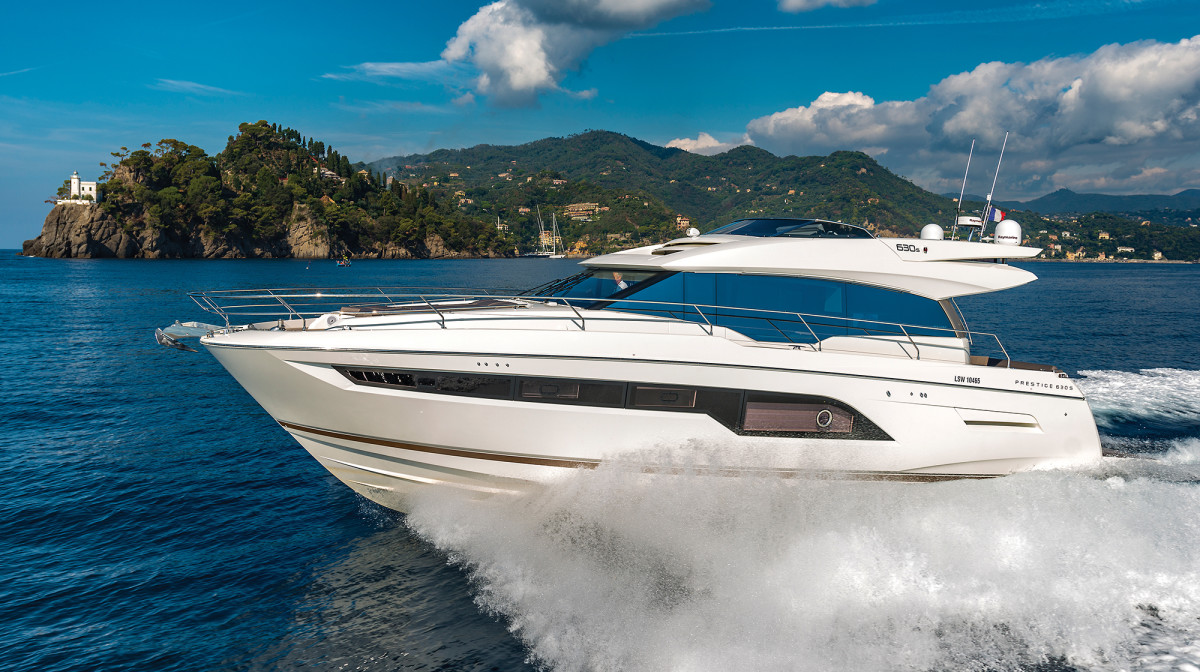
Prestige 630S
Prestige has been really inventive lately in how it incorporates more usable space in the cabin; the 630S is no exception, with a three-stateroom layout. The amidships master spans the full beam and has its own entry companionway opposite the galley, creating a degree of privacy that I am accustomed to seeing on larger yachts. It’s a game changer. There’s a lounge to port and a dressing table to starboard. The head compartment is forward.
The additional accommodations consist of a VIP in the bow and a double to port. Both are finished to the same level as the master, with a delightful feel, owing largely to the headroom. The VIP head, for instance, has a skylight in its 6-foot 9-inch overhead.
Prestige takes its understanding of how people fit in spaces and translates that to the engine room. Varying overhead heights range from 5 feet 11 inches to 6 feet 4 inches. The Volvo Penta D11 diesels, linked to IPS2-C pods, are 24 inches apart. The pod drives are jackshafted so they are positioned beneath the forward of the two berths in the crew’s quarters aft. This design lets the builder make the most of the IPS system, while still maintaining its design parameters for center of gravity.
The attention to detail in propulsion placement shows in the boat’s performance. The 630S is ready to run and tracks well, though maintaining her heading was easy in the very favorable conditions we saw on our cruise. I drove her from the bridge, where the portside helm has a racy little wheel and helm and companion seats, plus additional seating at an aft lounge with table. I put her through some sweeping turns, and she dropped her shoulder into them while her hull gripped the water. I would have liked to give her a real run in some rough seas to see what she can do, but it was not to be. We had to get to lunch.
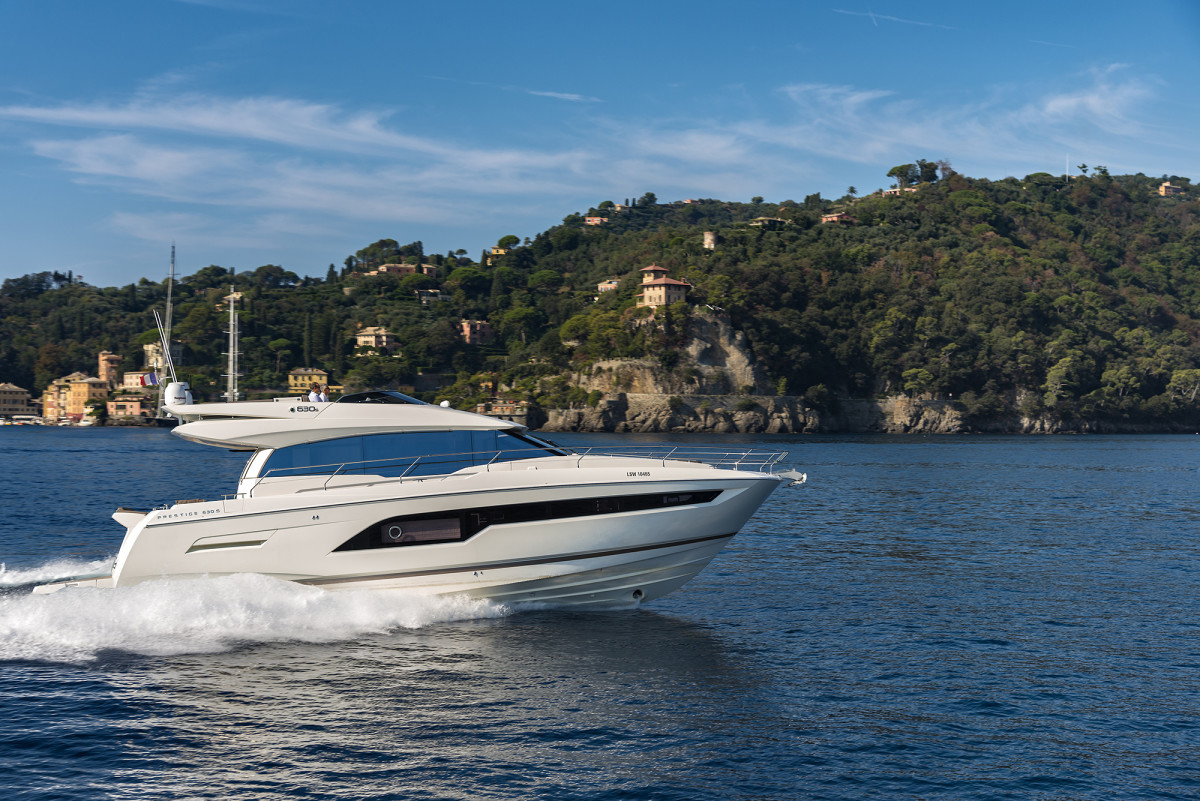
Prestige 630S
We pointed her bow to Santa Margherita Ligure, a town situated on the same peninsula as Portofino, where we were to meet Camillo Garroni, a principal at Garroni Design and son of founder Vittorio Garroni. This Genoa-based firm helped Prestige create the look and feel of the entire model range. “The line has a family feel,” Garroni said over lunch at a seaside restaurant. “But we are able to offer so much in each model, that another trait of the designs is that they don’t make the buyer compromise or choose one feature over another.”
The coastline of Liguria along the Tyrrhenian Sea is rocky and steep in parts, and punctuated by occasional harbors, some natural and some augmented by man-made structures. Lavagna and Santa Margherita Ligure are of this latter variety, with impressive breakwaters and huge marinas. But it’s the other kind of port that draws the eye and captures the imagination.
Of course there’s Portofino, with its brightly colored buildings lining the diminutive harbor. Here, we passed a pair of large, investment-class sailboats moored at the harbor’s outermost edges. Once our Prestige 630S entered its confines, I got a real sense of just how small it is in here. As we Med-moored to the seawall, accompanied by only one other yacht, the harbor seemed all the tinier for its relative emptiness.
Once we tied up, we headed out to explore a bit. A walk around the harbor took all of 10 minutes, as the boutiques and cafés were open but things were rather quiet as it was the shoulder season. To really explore, there’s only one way to go: up. The steep hills around the harbor welcome intrepid climbers with staircases and pathways leading up to churches (it is Italy, after all) and homes, and even a sculpture garden tucked among the terraces. It was beautiful to look at. Yet even beyond the sculpture, this place is just a work of art. And some of the details are not exactly what they seem.
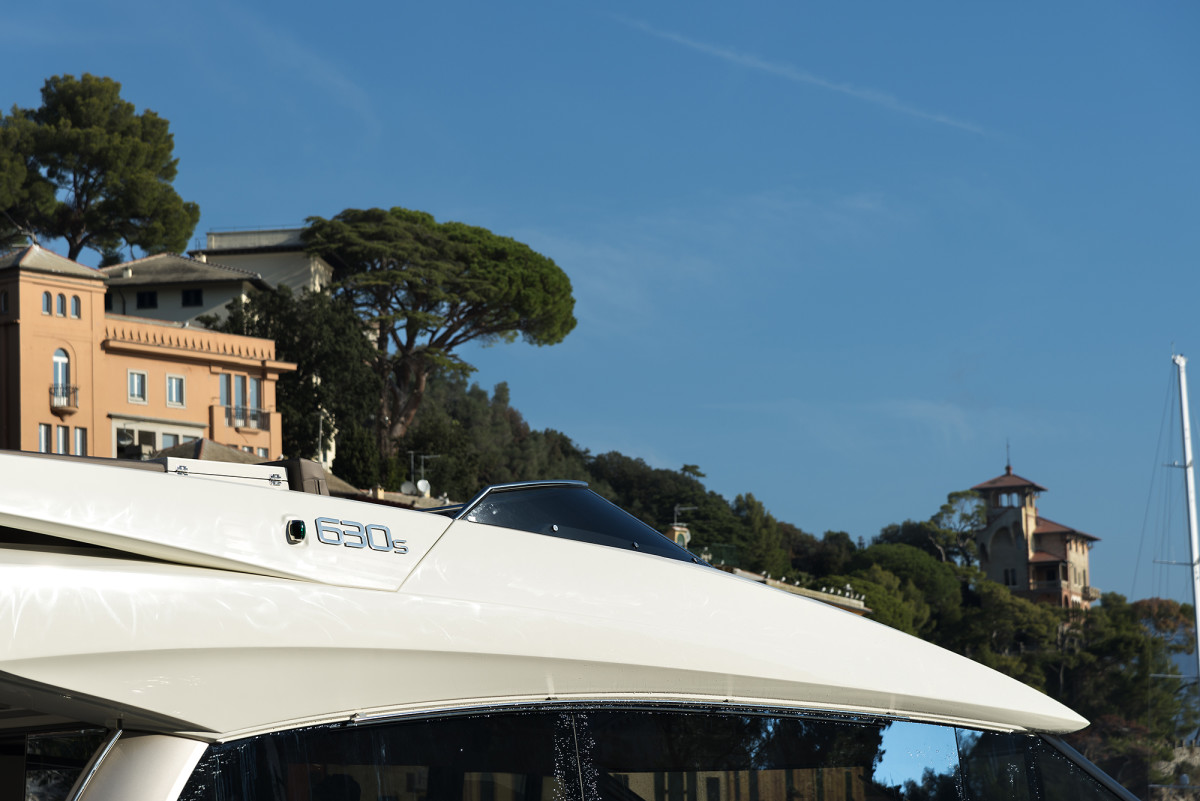
Berton and I were having an afternoon coffee in a waterfront café when he looked up at the buildings and then turned to me and asked, “Do you have a word in English for how the building details are painted? The stonework?”
I looked up and noticed that much of the detail was created by artisans who work with paintbrushes rather than chisels and trowels. “Yes,” I said. “In English it’s called trompe l’oeil.”
Portofino is prettier in real life than in the pictures we all have seen, with multicolored buildings along the waterfront framing the natural harbor and its piazzetta, all in a kind of dollhouse scale that distills its loveliness. One gentleman told me Portofino was an amalgamation of “porto” and “delfino,” due to the frequency with which one sees dolphin in this area. I was inclined to believe him since we had already seen porpoise as we got underway after leaving Lavagna.
We took a short jaunt up the coast to another natural harbor surrounded by steep cliffs: San Fruttuosa in Camogli, home to a monastery and also a beach with a restaurant. The excursion boats that ply this coastline offer one way to get to this secluded spot; hiking is another. There didn’t seem to be much in the way of moorings or dock space for private boats, but we idled around the mouth of the harbor. Another reason to visit this location is the original Christ of the Abyss, an 8-foot-tall bronze statue that sits on the bottom—56 feet down—near the mouth of the harbor. (There are two other statues like this; one in Grenada and another in Key Largo.) The maneuverability of the 630S with its Volvo Penta joystick control allowed us to hold station with minimal effort, and also avoid the fast-moving tourist boats.
We turned and continued east as the coastline began to curl south, its rough-hewn stone and greenery still lush even as summer gave way to autumn. We relaxed in the delightful breezes on the flybridge, keeping watch and just enjoying the sights, scrolling the chart to see our approach to the first town of the Cinque Terre, or five villages. As Monterosso came into view, we knew it was time to turn and retrace our route, to set a course for the marina at Lavagna. I wanted to save some of these wonderful places for the next time I came. After all, it’s only once that you can see them for the first time.
Prestige 630S layout diagrams
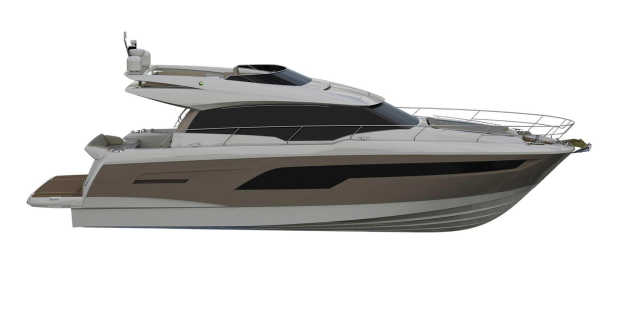
The Test
Test Conditions: Air temperature: 72 F; humidity: 92%; seas: 2-3’.
Load: 190 gal. fuel; 175 gal. water, four persons.
Prestige 630S — Final Boat Test Numbers:
Speeds are measured in two directions with Raymarine GPS. GPH is recorded from Volvo Penta engine-monitoring system. Sound levels are measured at the lower helm. 65 dB(A) is the level of normal conversation.
Specifications:
LOA: 62’5”
Beam: 16’11”
Draft: 4’11”
Displ.: 72,752 lb. (full load)
Fuel: 593 gal.
Water: 175 gal.
Power: 2/725-hp Volvo Penta IPS 950
Transmission: Volvo Penta IPS, 1.70:1 gear ratio
Propellers: Volvo Penta P3 propset
Generator: 21-kilowatt Fischer Panda
